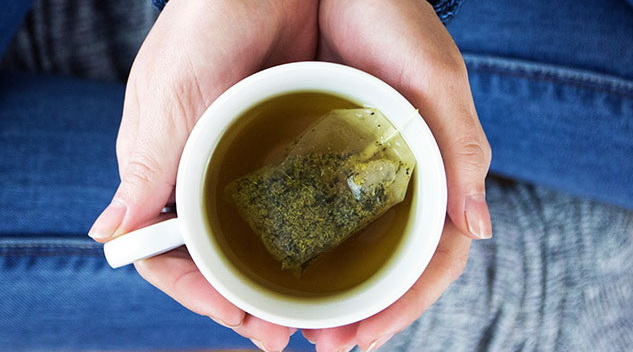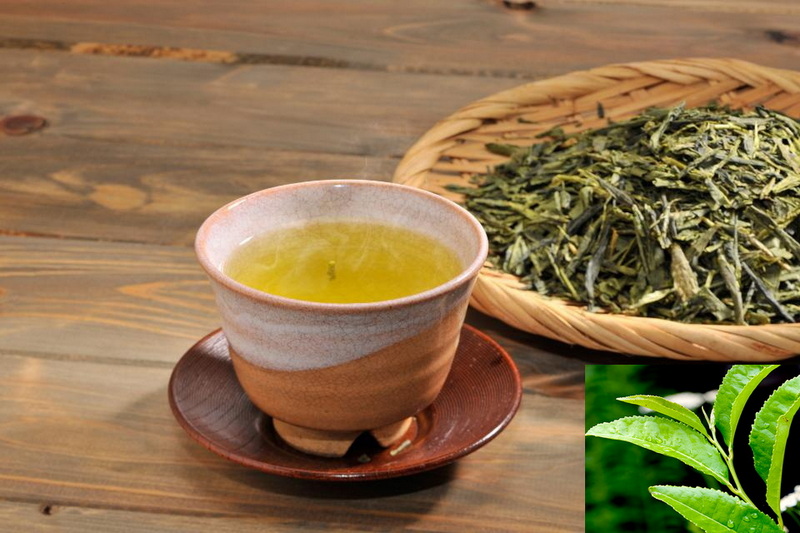Content Menu
● Understanding Tannins
>> The Role of Tannins in Plants
>> Health Benefits of Tannins
● What is Tannic Acid?
● Composition of Green Tea Extract
● Is Tannic Acid Present in Green Tea Extract?
● How Tannins Affect the Flavor of Green Tea
● Factors Affecting Tannin Content in Green Tea
● Potential Downsides of Tannins
● Counteracting the Downsides
● Conclusion
● Frequently Asked Questions (FAQ)
>> 1. What are the main differences between tannins and tannic acid?
>> 2. How do tannins in green tea benefit health?
>> 3. Can tannins in green tea cause digestive issues?
>> 4. How does brewing time affect the tannin content in green tea?
>> 5. Are there ways to reduce the negative effects of tannins, such as iron absorption inhibition?
● Citations:
Green tea extract, celebrated for its health benefits, originates from the Camellia sinensis plant[3]. This extract is rich in various compounds, including polyphenols, catechins, and flavonoids, which contribute to its antioxidant and anti-inflammatory properties[9][10]. However, a common question arises: Does green tea extract contain tannic acid? To address this, we will explore the composition of green tea extract, the nature of tannins and tannic acid, and their presence and roles in green tea.

Understanding Tannins
Tannins are a class of polyphenolic compounds naturally occurring in various plants[9]. These compounds are known for their ability to bind with proteins and other organic compounds, which is why they are used in tanning leather[9]. Tannins are responsible for the astringent and sometimes bitter taste in foods and beverages like wine, chocolate, and tea[6][9]. They contribute to the depth of flavor and the distinctive dryness or puckering sensation in the mouth[9].
The Role of Tannins in Plants
In plants, tannins serve as a defense mechanism against herbivores. Their bitter taste deters animals from consuming the plant[9]. Additionally, tannins play a role in protecting plants from microbial infections and environmental stressors[10].
Health Benefits of Tannins
Tannins offer several health benefits due to their antioxidant properties[9]. They can neutralize harmful free radicals in the body, reducing oxidative stress and the risk of chronic diseases such as heart disease and cancer[9]. Some studies suggest that tannins may also promote heart health by lowering blood pressure, improving cholesterol levels, and reducing inflammation[9]. Furthermore, tannins can help in blood sugar control by affecting glucose absorption and insulin sensitivity, making them potentially beneficial for individuals with diabetes[9].
What is Tannic Acid?
Tannic acid is a specific type of tannin, often derived from the bark of oak trees and the skins of certain fruits[9]. It is commonly used in industrial applications, such as leather tanning, and has different properties compared to the tannins found in tea[9].
Composition of Green Tea Extract
Green tea extract is composed of various polyphenolic compounds, primarily catechins[10]. These catechins include:
- Epigallocatechin Gallate (EGCG): The most abundant and well-studied catechin in green tea, known for its potent antioxidant and anti-inflammatory effects[10].
- Epicatechin Gallate (ECG): Another significant catechin with antioxidant properties[10].
- Epigallocatechin (EGC): A catechin that contributes to the health benefits of green tea[10].
- Epicatechin (EC): A catechin with antioxidant and anti-inflammatory properties[10].
These catechins, while being a type of tannin, are different from tannic acid[9]. Green tea also contains other polyphenols, flavonols, and depsides, which contribute to its overall flavor and health benefits[10].
Is Tannic Acid Present in Green Tea Extract?
While green tea contains tannins, it does not typically contain tannic acid[9]. The tannins in green tea are primarily catechins, which impart a slightly bitter to refreshingly astringent flavor without the harshness associated with tannic acid[9]. Tannic acid is more commonly associated with the tanning of leather and is derived from different sources than the tannins found in green tea[9].
How Tannins Affect the Flavor of Green Tea
Tannins significantly influence the flavor profile of green tea[10]. They contribute astringency, which is a mouthfeel rather than a flavor, causing a dry, rough sensation by interacting with saliva[6][10]. This astringency adds brightness to the tea's overall flavor[10]. Additionally, tannins can contribute to the umami flavor through compounds like theogallin, enhancing the tea's complexity[10].

Factors Affecting Tannin Content in Green Tea
The tannin content in green tea can vary based on several factors[9]:
- Tea Type and Processing: Green tea, being less oxidized than black tea, generally has lower tannin levels, resulting in a lighter, fresher taste[9].
- Brewing Time: Longer brewing times extract more tannins, increasing bitterness and astringency[10]. Shorter steeping times result in a milder flavor with fewer tannins[10].
- Age and Maturity of Tea Leaves: Younger leaves typically contain higher levels of tannins due to their need for protection against insects[9].
- Elevation: Teas grown at higher elevations tend to have more complex flavors and higher tannin concentrations due to cooler climates and greater UV exposure[9].
- Teaware Materials: The material of teaware can also affect tannin content; porous materials like pottery and clay can absorb some tannins during brewing[9].
Potential Downsides of Tannins
While tannins offer numerous health benefits, there are potential downsides to consider[8]:
- Iron Absorption: Tannins can bind to iron, particularly non-heme iron found in plant-based foods, making it harder for the body to absorb this essential nutrient[9]. This is particularly concerning for individuals with iron deficiency, vegetarians, and vegans[9].
- Digestive Problems: High consumption of tannins can cause gastrointestinal upset or lead to nausea and constipation in some people, especially those with sensitive stomachs[8].
- Medication Interactions: Tannins can interact with certain medications, such as nadolol, a beta-blocker used to treat high blood pressure and heart problems[9].
Counteracting the Downsides
To mitigate the potential downsides of tannins, consider the following tips[9]:
- Consume Vitamin C: Eating foods rich in vitamin C, such as peppers, potatoes, cantaloupe, or oranges, before or after drinking tea can help neutralize tannins and improve iron absorption[9].
- Avoid Tea with Meals: If you are concerned about iron absorption, avoid drinking tea with meals, especially those containing iron-rich foods[9].
- Choose Lower Tannin Teas: Opt for teas known to have lower tannin content, such as white tea[9].
- Use Appropriate Teaware: Utilize teaware made of porous materials like pottery or clay, which can absorb some of the tannins[9].
Conclusion
In summary, while green tea extract is rich in tannins, it does not contain tannic acid. The tannins present in green tea are primarily catechins, which contribute to its health benefits and unique flavor profile. Understanding the properties and effects of tannins can help you optimize your consumption of green tea extract to maximize its benefits while minimizing potential downsides.

Frequently Asked Questions (FAQ)
1. What are the main differences between tannins and tannic acid?
Tannins are a broad class of polyphenolic compounds found in many plants, responsible for astringency and bitterness. Tannic acid is a specific type of tannin, typically derived from oak bark and used in industrial applications like leather tanning[9]. While green tea contains tannins (catechins), it does not contain tannic acid[9].
2. How do tannins in green tea benefit health?
Tannins in green tea, particularly catechins like EGCG, offer antioxidant properties that neutralize harmful free radicals, reducing oxidative stress and the risk of chronic diseases[9]. They may also promote heart health by lowering blood pressure and improving cholesterol levels, and help control blood sugar levels[9].
3. Can tannins in green tea cause digestive issues?
In some individuals, especially those with sensitive stomachs, consuming large amounts of tannins can lead to gastrointestinal upset, nausea, or constipation[8]. Moderation and consuming green tea with food can help mitigate these effects[9].
4. How does brewing time affect the tannin content in green tea?
Longer brewing times extract more tannins from green tea leaves, resulting in a more bitter and astringent flavor[10]. Shorter brewing times yield a milder flavor with fewer tannins[10]. Steeping green tea in 80 Celsius water for 20 minutes can extract 100% of the tannins[10].
5. Are there ways to reduce the negative effects of tannins, such as iron absorption inhibition?
Yes, consuming vitamin C-rich foods, avoiding tea with meals, choosing lower tannin teas, and using appropriate teaware can help reduce the negative effects of tannins[9]. Vitamin C enhances iron absorption, while porous teaware materials like pottery can absorb some tannins[9].
Citations:
[1] https://pubmed.ncbi.nlm.nih.gov/37379568/
[2] https://pmc.ncbi.nlm.nih.gov/articles/PMC4666621/
[3] https://pmc.ncbi.nlm.nih.gov/articles/PMC7478251/
[4] https://pmc.ncbi.nlm.nih.gov/articles/PMC11162682/
[5] https://www.urmc.rochester.edu/encyclopedia/content?contenttypeid=19&contentid=greenteaextract
[6] https://tea101.teabox.com/tannins-in-tea
[7] https://www.mdpi.com/2076-2615/12/20/2838
[8] https://www.japanesegreentea.in/blogs/japanese-green-tea-lovers-in-india/green-tea-science-part-2-tannin-and-gallic-acid-7-commonly-asked-questions-and-how-you-can-benefit
[9] https://teatsy.com/blogs/blog/what-are-tannins-in-tea
[10] https://bostonteawrights.com/tea-tannins-part-2-green-tea/






























